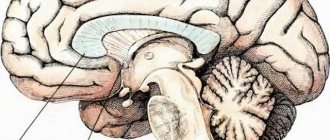Concept: professional stress
Occupational stress is complex physiological and psychological reactions associated with work issues. Almost every working person receives this stress when performing work duties.
Most often, it affects employees who are not confident in their competence and perform work that does not correspond to their knowledge. At high risk are people who are subject to pressure from colleagues and managers.
Examples of occupational stress
Many try to challenge the situation, take on responsibilities for which they lack the knowledge. At the same time, they are in a state of constant tension, which provokes the development of stress.
Professional competition stress. Professional stress of success
The life of many men and women resembles a desperate race along the “rails” of competition: “Who will beat me?”, “Who has more than me?”, “Who has achieved more than me?”, “Who lives better than me? "
As a result, they perceive others primarily as competitors, even their friends and family; they are accompanied by the fear of being unsuccessful and losing in the competition. They react painfully to the smallest details that creep into ordinary conversation, and they envy the success of even strangers. After all, they are afraid to be natural, and in order to be considered successful and rich, they behave unnaturally, embellishing themselves and their lives: “I live in a big house” (in fact, in a small apartment), “Our family has a car” (most likely, old “Moskvich”), “I earn a lot of money” (read between the lines: I receive a small salary).
Everything is often given to the “altar of competition”: strength, health, renunciation of the joy of life, friends, love, and sometimes even the birth of children (especially if a woman follows the “competitive” path).
A person who indulges in a competitive “race” begins to live “a life that is not his own”: he chooses a job not according to his inclinations, but according to prestige, he is surrounded only by the “right” people and he does not have time and energy for friends, next to him is often a top -a model whose appearance meets European standards, but is not the woman she loves...
Self-affirmation and movement forward are inherent in almost all people. It is impossible to deny the desire to move up and improve your life. But, as with everything in life, you need to look for the “golden ratio”, balance, balance. When the balance of life is disturbed, problems, difficulties, and failures arise.
It is necessary to remember that you cannot have only one goal and subordinate everything in your life only to achieving it, because if for some reason the goal is not achieved, you can experience life collapse.
Stress is generally thought to be caused by unfavorable conditions of failure. Yes this is true. But adverse conditions are not the only source of stress. As strange as it may sound, an employee can also experience a lot of stress when he achieves great success for which he spent a lot of time and effort.
The stress that overcomes a person at the moment of greatest success is expressed in the experience of a state of “meaninglessness” achieved after a significant event.
In fact, after achieving a significant goal, a person may experience a sharp decrease in vitality. Apathy and indifference sets in, and it becomes unclear why so much time and effort was spent. The expectation that “when this happens” great happiness will come is not justified; basically everything remains the same. You may feel disappointed - in yourself, in people, in life in general.
In this emotional state, I feel like he didn't get everything he deserved through his hard work. As a result, he often gets no return from his work: he is depressed, dejected, or ill.
To avoid being caught up in the stress of success, you must not push yourself to the limit or overexert yourself even when achieving your most important goals. You should try to stay away from daydreams and dreams of happiness at the peak of success. The moment you reach your goal, you shouldn’t stop and continue planning your life. Remember that the emptiness after success is just a relief that needs to be filled with something new. Immediately, almost the next day, you need to switch to another activity and start something new. The main thing is to stay active and focus your energy on achieving a new goal.
Causes of professional stress
Stress in professional activity is caused by various reasons - physical and psychological. Some of them really exist, others are more far-fetched.
Physical impact is expressed in increased workload, unsatisfactory conditions in which work activities take place, ill-conceived work organization, special conditions (shifts, night hours).
Psychological factors include:
- high demands on oneself, hyper-responsibility;
- poor awareness, a lot of unnecessary information;
- uncertainty of duties and responsibilities;
- lack or too high motivation;
- frequent change of behavior strategies during the development of one situation;
- Lack of time;
- special working conditions;
- low employee status;
- subordination to management with high demands;
- dissatisfaction with career growth opportunities, their absence;
- difficult relationships in the team, with management;
- inadequacy for the position held;
- impossibility of self-realization;
- high workload with low pay.
Professional stress in our country is often associated with another factor: low wages. At the same time, job responsibilities, as a rule, have a significant scope. A person often cannot demand decent pay from management, fearing threats of dismissal from him.
The most stressful professions
Fear of losing your job is the main factor causing stress . This means that a person may lose his livelihood. This situation forces people to put up with unfair pay and poor working conditions.
Topic No. 1. “Professional stress. Mechanisms of accumulation of professional stress"
PROFESSIONAL STRESS is physiological and emotional stress, the source of which is the characteristics of professional activity.
Can lead to changes that negatively affect a person’s professional activity and life.
Professional activity of a rescuer
- combat duty
- rescue work in emergency situations (emergency situations)
- rescue work during large-scale emergencies.
Adverse factors affecting PSF specialists during the performance of professional duties:
- mental stress in a state of readiness;
- critical ambient temperatures;
- vibration;
- noise and light background;
- sudden light and sound signals;
- work in special clothing and personal protective equipment;
- increased physical activity;
- adverse effects of work and rest schedules;
- information uncertainty;
- lack of time to analyze the situation and make decisions;
- responsibility for performance results,
- tension arising in the process of interpersonal interaction between the rescuer and the victims;
- emotional intensity of experiences associated with contacts with the bodies of the dead;
- danger to life.
Adverse factors in the professional activities of rescuers
- work situation factors - physical stress - psychological stress
- socio-psychological factors
- system factors
SIGNS OF STRESS:
- Inability to concentrate on something.
- Too frequent mistakes in work.
- Memory deteriorates.
- Feeling tired too often.
- Very fast speech.
- Thoughts often “disappear.”
- Pain appears quite often (head, back, stomach area).
- Increased excitability.
- Loss of sense of humor.
- The number of cigarettes smoked increases sharply.
- Addiction to alcoholic beverages.
- Eating disorders: a constant feeling of malnutrition or loss of appetite and pleasure from food.
- Inability to finish work on time.
MECHANISMS OF PROFESSIONAL STRESS ACCUMULATION
The accumulation of professional stress among EMERCOM specialists has two mechanisms that are different in their psychological essence
1) WORK (ORDINARY) STRESS Accumulated stress. This is stress accumulated as a result of combat duty. Associated with the stressful nature of daily professional activities.
MECHANISMS OF ACCUMULATION OF ORDINARY STRESS
- PRESENCE OF MENTAL TENSION
- ISOLATION OF THE GROUP
- PHENOMENON OF UNCOMPLETE ACTION (getting stuck at the stage of initial mental stress)
2) TRAUMATIC STRESS This is stress accumulated after extreme situations (critical incidents), where employees are faced with a real danger to life and health, both their own and other people.
Consequences of professional stress
- Primary
- Secondary
- Tertiary Secondary consequences of occupational stress
EMOTIONAL BURNOUT SYNDROME (EBW) - PSYCHOSOMATIC DISEASES - POST-TRAUMATIC STRESS DISORDERS (PTSD) EMOTIONAL BURNOUT SYNDROME (abbreviated as EBW) is a state of emotional, mental and physical exhaustion resulting from chronic stress at work.
SYMPTOMS:
- physical
- emotional
- intellectual
- social
STRESS AND DEVELOPMENT OF PSYCHOSOMATIC DISEASES
Severe emotional and physiological stress increases the body's susceptibility to disease.
- IMMUNE SYSTEM SUPPRESSION
- HORMONAL DISTURBANCE
- DIGESTIVE SYSTEM DISORDERS
POST-TRAUMATIC STRESS DISORDER (PTSD)
Disorder associated with the experience of traumatic stress. The main symptom of PTSD is an exacerbation of the instinct of self-preservation and the chronic psycho-emotional stress caused by it.
PTSD SYMPTOMS:
- Repetitive and forcibly erupting memories of an event, including images, thoughts, and ideas.
- Recurring nightmares about the event.
- Actions or feelings consistent with experiences during the trauma (illusions, hallucinations, flashbacks).
- Impaired memory and concentration. Inability to remember important episodes of trauma, places, or people.
- Detachment and alienation from other people, a feeling of loneliness. Distance from the outside world (“they can’t understand me”).
- It is more difficult to experience feelings of love and joy (emotional dullness).
- Aggression increases. The desire to solve all life's problems with the help of forceful pressure. Outbursts of anger occur.
- There is a feeling of a shortened future.
- Feelings of guilt appear.
- Super vigilant.
- Exaggerated response.
Prevention of professional stress.
As you know, stress is an important social problem that indirectly affects the stability of behavior in an organization and the life of society as a whole. The relevance of this problem has especially increased in recent years for the Russian population, which is associated with the processes of socio-economic changes and the current economic crisis. A large part of society experiences social stress, which leads not only to material difficulties and instability of a person’s social status, but also to the experience of prolonged psycho-emotional stress.
On the other hand, the intensification of the economic and social life of society leads to a deterioration in the health of the population, which leads to a loss of the ability to meet the requirements of professional activity and the ability to master a profession.
In recent years, a new type of pathology has been noted - information neuroses, which arise with an increasing flow of information and a lack of time for processing it and making responsible decisions. All these factors affect a person’s performance, the effectiveness of his performance of job descriptions and, in general, the success of the organization. This characterizes the professional activities of employees of the Russian Ministry of Emergency Situations as accurately as possible.
Intense, responsible work is always accompanied by pronounced tension in the functional systems of the body and requires special corrective medical and psychological measures. In the absence of proper preventive and recovery measures, various types of functional disorders may occur, reducing the reliability and efficiency of work, and with prolonged exposure, leading to the development of occupational pathology with subsequent disqualification.
A stressful state is a high degree of functional tension in the body, associated with the influence of stress factors of great intensity, duration or psychological significance for the individual. A stressful state in activity or “professional stress” is a special functional state that directly depends on the impact of pronounced neuro-emotional stress, which is characterized by hyperactivation or inhibition of the body’s regulatory physiological systems, the development of a state of tension or fatigue, and also, with the accumulation of unfavorable changes, overexertion or overwork. In a person, the rational (rational) and emotional (mental) are inextricably linked. The connection between somatic (physical) state and mental (spiritual) balance is also inextricable. The connection between success in activity and the level of psychological stress has been scientifically substantiated.
An important role in organizing preventive and restorative measures aimed at eliminating the negative consequences of nervous overload, emotional stress and other unfavorable conditions is played by their implementation directly in the organization. And first of all, this should include the work of psychophysiological unloading and mobilization rooms. Historically, psychological relief rooms were developed in Holland in the late 70s of the 20th century and were considered only a means of entertainment, not therapy. By the end of the 80s in England, rehabilitation therapists of various profiles began to use the psychological relief room in psychotherapeutic practice and talk about the visible therapeutic results of its use. Today, the psychological relief room is a tool for reducing the stress on employees engaged in work associated with increased concentration, physical, emotional and moral stress.
The organization of systematic anti-stress prevention and mental hygiene of stress in the Main Directorate of the Ministry of Emergency Situations of Russia in the Bryansk Region is designed to increase the stress resistance of employees to various factors. Today, there are various methods of mental hygiene of stress, and organizational forms for the prevention of psycho-emotional overload have been developed. It is within the framework of individual protection from stress with the help of modern methods of psychological self-regulation, group trainings aimed at increasing stress resistance, reducing frustration tolerance that the newly created room for psycho-emotional relief functions. The equipment of the office meets the highest demands and requirements of psychological support for the activities of personnel. A specially designed interior and modern equipment contribute not only to quality rest, but also teach skills to overcome stress loads and elements of psychophysiological self-regulation. The physiological manifestations of stress are not only a feeling of fatigue, but also muscle tension, leading to deep negative emotional states.
An excellent way to relieve muscle tension is, of course, massage. And the combination of vibration massage and relaxation music, a magnetic applicator that isolates visual stimuli, creates a sustainable effect of deep relaxation and restores an optimal functional state. The “Concord” vibromassage chair is an achievement of British engineers and doctors that provides this effect. Unlike the well-known Nuga-Best massage bed, Concord does not have an external warming effect, which reduces the risk of undesirable consequences and the number of contraindications. In addition, the combination of automatic and semi-automatic massage modes, the ability to manually control and select functions make the device a “universal massage therapist.” After all, you can choose a massage not only by the type of impact - acupressure, stroking, effleurage, compression, vibration massage, but also on a specific muscle group - the cervical region, shoulder girdle, hip joints, back area, upper and lower extremities, or any combination thereof. A course of ten to twelve sessions of this massage provides a pronounced anti-stress and healing effect. Another component of creating a rehabilitation environment is the Plasma-250 color-dynamic filling apparatus. Changing color spots, saturating the room with color and sound create a wonderful background for auto-training, a relaxation session, self-regulation and recovery after a hard day. The aerophytoionization device of the room purifies the air, aromatizing it with vapors of essential oils in accordance with the task - “unload” or “mobilize” for new victories and achievements. After all, we all react to aromas, often without understanding what effect they have on the body. And in the work of a psycho-emotional relief room, aromatherapy rightfully occupies its due and important place. Of particular importance in the rehabilitation of employees is the BOSLAB biofeedback complex - this is a new health and rehabilitation technology that qualitatively changes the relationship in the “doctor-patient” system and ensures the patient’s transition from a passive object of medical and psychological influences to an active subject of the entire treatment and rehabilitation process. The basis of therapeutic and correctional work is training the patient in the skills of maintaining optimal individual characteristics of the alpha and beta rhythms of the electroencephalogram of the brain, their relationships with simultaneous monitoring of the electromyogram and temperature.
Biofeedback training is indicated for various conditions - from normal to dysthymic disorders. The capabilities of the new technology are impressive: “Basic self-regulation training” - training in techniques for managing physiological functions and skills for quick recovery. “Deep” training – neurofeedback” is training in the skills of instant concentration and effective relaxation using electroencephalographic training, breathing training and con-correcting states of psycho-emotional stress, accompanied by increased tone of the sympathetic nervous system. “Electromyographic training” is indicated for conditions of psycho-emotional stress, anxiety, tension headaches, and back pain. And this is not a complete list of BOSLAB’s capabilities. The software and hardware complex was developed by the Laboratory of Computer Biocontrol Systems of the Institute of Molecular Biology and Biophysics of the Siberian Branch of the Russian Academy of Medical Sciences, Novosibirsk. Not everyone is aware of the need to contact a specialist and not always on time. But finding time to prevent unwanted conditions is quite simple. All activities are pleasant, easy and do not require special preparation.
Main types of professional stress
The concept of professional stress is quite narrow, but its main types can be distinguished:
- Informational. It is accompanied by mental and physical overload, which is caused by information limitations and frequent changes in information, strict time constraints, lack of time, strength and ability to complete the task and make a quick decision. If a person's responsibility is high, this can make the situation worse. In any case, work efficiency decreases.
- Emotional. This type concerns people who do not know how to be flexible, accept circumstances, and always swim against the tide. As a rule, such people do not have high professionalism. The danger lies in the fact that it affects a person’s emotional level, causing him to destroy his values and attitudes and burn out emotionally.
- Communicative. This is a sharper and stronger type compared to the information one. It is provoked by a person’s inability to establish connections, perform responsibilities logically correctly, the inability to say no in a timely manner, and the tension is aggravated by aggression and successful attempts at manipulation by colleagues.
The main types of professional stress help determine the cause of stressful emotional tension , the sources of the problem, which helps in eliminating it.
Stress in professional activity: types and stages
Find out what awaits you today - Horoscope for today for all zodiac signs
Due to numerous requests from subscribers, we have prepared an accurate horoscope application for mobile phones. Forecasts will arrive for your zodiac sign every morning - it's impossible to miss! Download for free: Daily Horoscope 2020 (available on Android)
A huge number of workers face work stress every day. Those with a sensitive nervous system, empathic and psychologically unstable individuals are most susceptible to it. Life is much easier for stress-resistant employees, but their percentage is not so high.
Professional stress is stress that arises as a result of difficult situations related to work activity. If we literally translate the term from English, we get “pressure, tension.” These phenomena are the result of prolonged exposure to serious emotionally negative factors.
In psychology, there are 3 types of work stress:
- Emotional . The reasons for its appearance are various kinds of conflict situations. Such stress involves a person’s internal experiences, feelings of resentment, guilt, injustice and anger that arise due to problems in the team.
- Informational . It is caused by too much intellectual load, overload or lack of information, and the need to adhere to strict time frames. Overly responsible people are most susceptible to information stress.
- Communicative . Its reasons: misunderstandings with colleagues, superiors, inability to cope with manipulation, to take the right position in a team, communicative aggression.
In addition to the types of professional stress, there are also 3 stages:
- Anxiety is an extremely negative factor; it provokes a feeling of fear, increases anxiety, and leads to a sharp increase in mental stress.
- Resistance - at this stage the body joins the fight, trying to overcome the problem. A person adapts to an unhealthy environment, gets used to it and, as a result, becomes completely immersed in a stressful state.
- Exhaustion develops if there are no attempts to change the situation at the previous stages. Stress becomes chronic, it gradually leads to depletion of the body's resources, causing health problems, often even dangerous pathologies.
Important! A common consequence of stress at work is professional burnout.
The most stressful professions
Stress is a constant in almost all workplaces. This is noted by the majority of people who participated in the sociological survey. According to scientists, the first group of the most stressful professions includes high-ranking military personnel and contract workers , firefighters and representatives of civil aviation.
Professional stress
The second group includes people whose work is related to the public and information, these are event coordinators, PR directors, managers, correspondents, and police officers. The highest level of tension is observed in government organizations, where there is a high level of staff turnover.
How to increase stress resistance
You can avoid and survive stress that occurs in the workplace by following these rules:
- Watch yourself . What sensations come at the first stage of tension? Do you endure discomfort for a long time or start at a half-turn? What happens when you lose self-control? Answers to questions will help you know yourself, learn self-control, and develop protection against stress.
- Find effective methods that can press the “brake”, stopping yourself . Leave the room, shut up, go to the window.
- If tension occurs, it needs to be relieved by directing the energy to a pleasant activity. Water the flowers, drink coffee, wash your hands, chat with a nice employee from another office.
- Understand which work processes are interesting and enjoyable . Make time for enjoyable activities every day.
- During times of stress, concentrating on breathing helps, disconnecting from what is happening . Monitor your breathing until it becomes calm.
Professional stress of teachers: how to overcome it in the workplace
According to the stress table, the profession of a teacher is in 8th place and scores 6.6 points on a 10-point scale. This suggests that the work of a teacher requires high self-control, self-regulation and enormous psychological reserves. Therefore, it is important to increase the level of stress resistance of people working in this field.
Teachers' stress
Stress is often impossible to prevent, but it can and should be dealt with. To increase the level of protection against stress, there is such a thing as stress management. Stress management in professional activities includes two stages:
- training work at the organization level as a whole;
- working with each employee individually.
The following measures are mandatory.
- Creating favorable working conditions.
- Creation of a working feedback system with management.
- Involving employees in resolving issues and making common decisions.
- Teamwork, proper distribution of workload and responsibility.
- Social support for employees.
- Stress management training.
And to determine the level of exposure to unfavorable factors, an occupational stress scale is used. It allows us to understand the degree to which a person is exposed to adverse work-related factors.
Stress management at the organizational level
Stress management at the organizational level involves changing the organizational climate and anti-stress support for employees within the framework of special programs. Understanding the negative consequences of stress is of great importance at this level, because Only with its help can the organization’s management and HR specialists organize stress monitoring and develop measures to minimize, mitigate and prevent the consequences of stress factors.
Creating a favorable organizational climate is one of the primary tasks of effective stress management in an organization, because such a climate serves, perhaps, as the best prevention of stress in general.
If a stressful situation arises, the climate in the organization can either enhance its impact or transform negative reactions of staff into positive ones. Interestingly, difficult situations can have a beneficial effect on team cohesion and enhance its creative potential.
Based on this fact, the management of many organizations today is taking all measures to create an atmosphere of trust and respect for each other within their teams, and this applies not only to employees at the same levels - constructive relationships are also built between managers and subordinates.
However, creating the right favorable climate is not an easy task, and “little things” that seem insignificant at first glance play a huge role in solving it. Therefore, to achieve this goal it is customary to use special methods:
- organizing a feedback system using corporate communications (website, mail, press);
- involving employees in making important decisions for the organization (reorganization of the structure, refinement of the technological process, etc.);
- the use of team and project forms of labor organization.
Today, great hopes are also placed on corporate events aimed at uniting the organization and strengthening the corporate spirit, but this approach is no longer something innovative - rather, it can be called standard. Therefore, experts warn that when using it you may encounter all sorts of difficulties and troubles.
Yes, you can organize a lot of interesting and fun holidays for employees, but at the same time do not have an established feedback system that allows management to have an idea of the needs of the staff and the staff to understand the real business tasks that the organization poses. Such a policy will only lead to employees turning into consumers of entertainment and salaries who do not take any responsibility for what happens in the company.
The example is, of course, particular, but it perfectly highlights the impossibility of creating a favorable climate using standard schematic approaches. Moreover, two important principles are not taken into account here:
- The principle of respect for the individual and granting him rights and responsibilities. People employed in the company must understand its main goals and objectives, be involved in its victories and achievements, and be aware of the reasons why certain decisions are made.
- The principle of developing measures to create a favorable corporate climate. At the same time, the mood, interests and needs of the staff should be studied. Understanding these features helps you choose the best methods to interact with employees by meeting their basic needs.
Methods for creating a favorable climate are described in specialized literature devoted to organizational climate research. With the right approach, a favorable climate can become an effective measure to prevent and mitigate stress factors, as well as a way of relaxation and recovery.
Another stress management factor at the organizational level should also be mentioned. It is to provide staff with greater responsibility for the results of their activities. But this factor will only act in conjunction with a clear distribution of functionality and workload, which makes it possible to prevent both insufficient workload and overload with work.
If employees decide for themselves what and how to do while working, the negative consequences of stress will decrease significantly. However, in practice this is very difficult to achieve, although there are still some ways. For example, scheduled meetings to discuss tasks with each specific department.
The redistribution of responsibilities is no less important. Of course, this is not always possible, but managers involved in stress management should always keep this issue in mind. And to solve it, you can use a variety of work situations, for example, the dismissal of one of the employees.
Upon dismissal, a workplace is freed up, and this can easily be used as an occasion to revise job descriptions and work assignments in order to make other jobs more interesting for the rest of the staff, as well as to optimize the workload. In this case, various methods of job analysis are used, such as expert assessment, timekeeping, photography of the working day, etc.
Another great way to prevent stress in the workplace is to implement flexible working hours. It is possible to minimize stress loads and increase job satisfaction if you give at least some employees the opportunity to independently arrange their schedule, based on production needs and functionality.
In addition, a significant organizational factor that can mitigate stress at work is social support for employees provided by immediate managers and close-knit teams. Many researchers believe that they act as a buffer between people and stress.
It is important to note here that in order to provide social support, stress management managers should first of all master anti-stress programs. Today, many such programs are available in foreign companies. They include behavioral and cognitive methods of coping with stress, and their use has been shown to reduce stress, improve sleep and increase the body's resistance to stress at work.
A lot of research has been done on this topic. For example, an experiment was conducted in the Netherlands where 130 people took part. He showed that corporate programs to train staff in stress management methods not only reduce nervousness, but also lead to psychological comfort, increase self-confidence and even increase productivity. Moreover, this effect lasted for six months, after which it was necessary to simply apply anti-stress methods again.
To make such programs more effective, you can initially teach them to more sensitive employees - later they will help their less susceptible colleagues to learn to cope with stress. And the accompanying positive impact of this approach is expressed in significant cost savings on the development and implementation of stress management programs, as well as in increasing the status of employees who train other people.
It is worth mentioning one more anti-stress factor - these are fitness programs provided to employees by organizations - they help improve physical health. But this is not their only purpose, because moderate physical activity is known to have a beneficial effect on the psyche (read more about this in the article “Preventing stress and developing stress resistance”).
However, these programs differ in an important nuance - responsibility for attending classes, maintaining a routine and maintaining a healthy lifestyle lies with the employees themselves. While it is still possible to track people's attendance at fitness programs, it is not possible to force them to attend them. But speaking more objectively, introducing stress management methods into an organization and training staff in them is several times cheaper than organizing a fitness program.
Therefore, such means of reducing the impact of stress as seminars, master classes and trainings, where employees can learn relaxation techniques and behavior change methods, master business communication skills and useful behavior techniques in conflict situations, are still considered more effective.
As you can see, there are quite a lot of ways to manage stress at the organizational level, but this information is still more useful for managers and executives than for ordinary employees who simply go to work every day and perform the functions assigned to them. At the personal level, the benefits will be much greater if individual stress management measures are applied.
Occupational Stress Scale
There are many tests that allow you to determine the level of influence of stress factors. To determine the degree of their impact at work, the occupational stress scale is used.
This test includes a list of questions, each answer is worth a certain number of points. The total number of points when calculated shows what impact work has on a person’s life, how and how much it increases his stress.
Development cycle of occupational stress
Interpretation of the results allows us to determine the degree of influence of stress on a person’s life. The problem is solved based on the results of the passage, but it is worth understanding that the scale only shows the presence of undesirable reactions to stress factors and the level of their influence.
At the same time, the degree of dissatisfaction with work and personal development can vary significantly from person to person. Even if two or more people scored the same number of points, it is not a fact that they will agree on the underlying causes of overexertion.
The methods used by different people to deal with stress also differ. Therefore, the results should be interpreted with extreme caution, without drawing hasty conclusions.
Professional stress is a phenomenon that is difficult to avoid. But there are many ways to combat it at work that will help to effectively reduce the negative impact. They should definitely be used to diagnose the state of stress resistance and improve performance.










